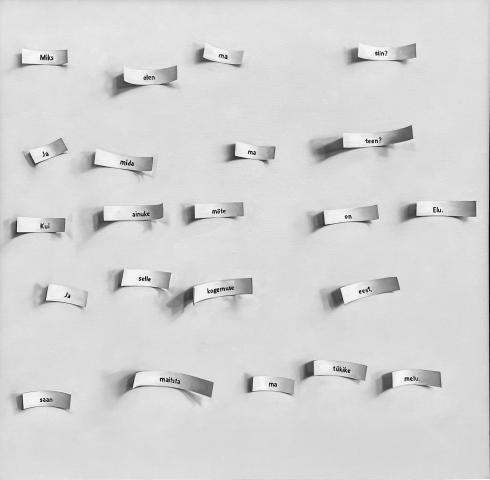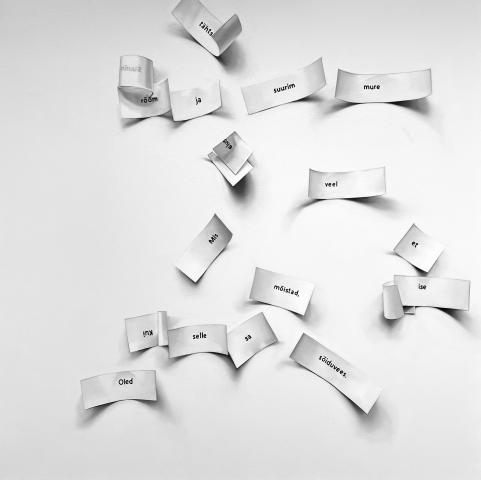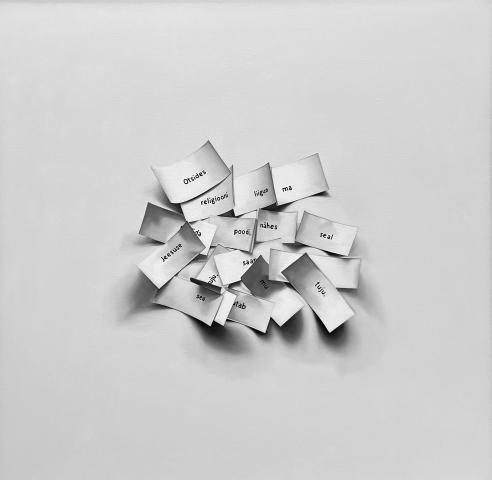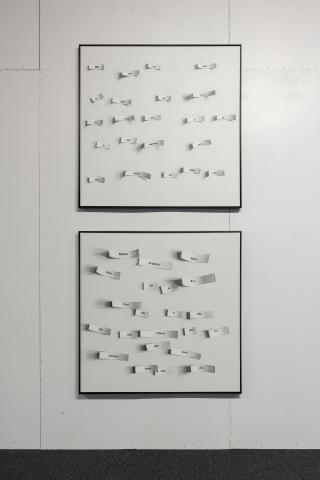Art, Dreams and Poetry
Mareli Reinhold
What do dreams, poetry and art have in common? They share within themselves opportunities to generate emotions, ideas and experiences, all of this through different forms of expression - through dreams, poetry and art, we explore and feel what is happening inside and around us, to interpret ourselves and others and to live lives that make us seem so far away. As William Shakespeare wrote in "Hamlet": "to die, to sleep. No more; and by sleep, to say we end. The heart-ache, and the thousand natural shocks That Flesh is heir to?”, both art and poetry have the power to make the pain of the soul better and all those thousand disorders and thereby directing to beauty and life. All the more wonderful when poetry turns into art and vice versa.
Many artists and writers have used this common ground to create powerful works of art that inspire, challenge and provoke thought. Some of the most famous examples in (art) history are undoubtedly Salvador Dali's surrealist (and also dreamlike) paintings, Edgar Allan Poe's poetry, some of which came to him through dreams, or Paul Klee's artworks, whose one point of view was that the material world was only one of many human beings of realities open to consciousness. Art and poetry are both powerful forms of creative expression. Either individually or together, they have the ability to move and inspire us in a way that few other mediums can.
Both art and poetry act like mirrors - whoever looks into them has to accept the reflection that reflects back to them. Maarit Murka has already made the art viewer look inside themself in her works ("Face Off", 2013/2022), but with these works "Poem 1” and “Poem 2” she steps out of her comfort zone in artistic language, painting in front of us, the lines of poetry that have reached her the most in the most mundane moments. In those moments when a person drops their protective shield and stands in themself. The lines of poetry are not presented in a strict form, but rather invite the viewer to an adventure where each of us can vibrate at the exact frequency with the work of art that is needed at that moment. Therefore, if the viewer expects these works to be Murka-like figurative, they will be disappointed. But if you look at them while standing in this same self as these were created, looking in the mirror, seeing the stories that the lines of poetry begin to tell... Then a world unfolds that the lines of writing here cannot and do not even try to grasp.
Kunst, uni ja luule
Mareli Reinhold
Mis on ühisosa unel, luulel ja kunstil? Nad jagavad endas võimalust genereerida emotsioone, ideid ja kogemusi, seda kõike küll läbi eri väljendusvormide - läbi unenäo, läbi luule ja läbi kunsti saame uurida ja tunnetada seda, mis toimub meie sees ja ümber, lahti mõtestada iseennast ja teisi ning elada elusid, mis meist nii kauged tunduvad. Nagu kirjutas William Shakespeare “Hamletis”: “Surra, magada – muud midagi, sest nõnda uinudes kaoks hingepiin ja kõik need tuhat häiret, mis meie liha pärib looduselt”, siis nii kunsti kui luule käes on võim teha paremaks hingepiin ja kõik need tuhat häiret ning sellega suunata ilule ja elule. Seda imelisem, kui luule muutub kunstiks ja vastupidi.
Paljud kunstnikud ja kirjanikud on seda ühist alust kasutanud võimsate kunstiteoste loomiseks, mis inspireerivad, esitavad väljakutseid ja ärgitavad mõtlema. (kunsti) Ajaloo ühtedeks kõige kuulsamateks näideteks on kahtlemata Salvador Dali sürrealistlikud (ja sh ka unenäolised) maalid, Edgar Allan Poe poeesia, millest osad jõudsid temani läbi unenägude või Paul Klee kunstiteosed, kelle üks seisukoht oli, et materiaalne maailm oli vaid üks paljudest inimeste teadvusele avatud reaalsustest. Kunst ja luule on mõlemad võimsad loomingulise väljenduse vormid. Kas eraldi või koos, on neil võime meid liigutada ja inspireerida viisil, mida vähesed teised meediumid suudavad.
Nii kunst kui ka luule käituvad kui peeglid - kes sinna sisse vaatab, peab leppima peegeldusega, mis teda vastu reflekteerib. Kunstinautlejat on Maarit Murka oma teostes enda sisse vaatama pannud juba varem (“Face Off”, 2013/2022), kuid antud teostega “Poem 1” ja “Poem 2” astub ta oma kunstikeelsest mugavustsoonist välja, maalides meie ette luuleread, mis on temani jõudnud kõige argimatel hetkedel. Nendel hetkedel, kui inimene laseb enda kaitsekilbi maha ja seisab iseeneses. Luuleread ei ole esitatud ranges vormis, vaid pigem kutsub vaatajat seiklusele, kus igaüks meist saab võnkuda just sel sagedusel kunstiteosega, mis parasjagu vajalik on. Seega, kui vaataja ootab antud teostes murkalikku figuurikäsitlusi, peab pettuma. Kui aga vaadata neid seistes selles samas iseendas, vaadates peeglisse, nähes lugusid, mida luuleread jutustama hakkavad... Siis koorub lahti maailm, mida siinsed kirjaread ei suuda ega üritagi hoomata.









